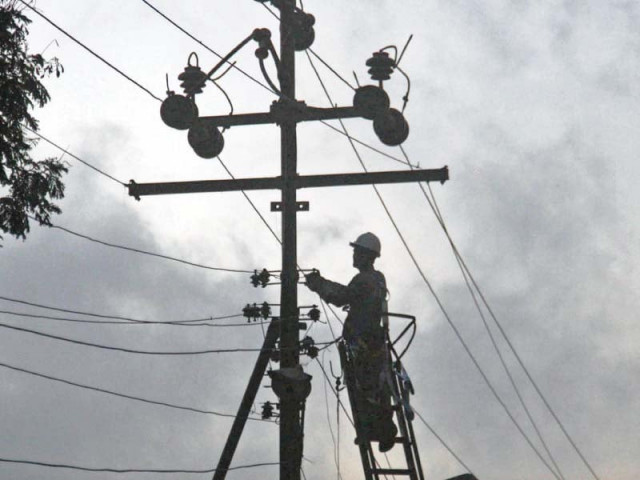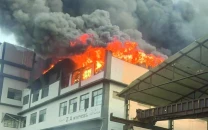Karachi citizens brave hot weather amid power and water crises
Restoration of power took up to 12 hours, supply halted in many areas

A K-Electric employee repairs electric wires on a pole in North Nazimabad. Many localities in the city plunged into darkness on Tuesday due to the tripping of Extra High Tension wires. PHOTO: ONLINE
Earlier, the power supply was suspended in many areas between Sunday night and Monday morning, which according to the power utility company, was due to similar reasons. KE said the tripping forced the power utility to carry out load management in different localities throughout the city.
K-Electric asks SHC to disqualify PPP candidate for defaulting on bills
The areas that remained affected due to the tripping of the EHT line at midnight and by irregular load shedding till Tuesday afternoon included Defense, Clifton, Saddar, Garden, Lyari, Landhi, Korangi, Gulitsan-e-Jauhar, Gulshan-e-Iqbal, North Nazimabad and Uthal.
The intermittent power breakdown, beginning on Sunday, also created a major water crisis in the city. According to the Karachi Water and Sewage Board (KWSB) a 72-inch main water trunk burst due to the water's back pressure after the power failure on Monday morning at Dhabeji pumping station. "This also affected 133 million gallons of water supply to the city," said KWSB spokesperson, Rizwan Ahmed. The line was repaired by Tuesday evening. However, there was another power breakdown which led to a burst in another water line on Tuesday morning. The water was, however, being supplied through alternative sources, according to Ahmed.
According to one citizen, who asked not to be named, the disruption of KE's system has become routine since the past many years and affects the lives of the city's residents even when there are small changes in weather. "Such frequent power breakdowns never happen in any other place as they happen in Karachi," she said.
She also felt that KE call centre provides misleading information to consumers in such situations causing further distress.
Khurram Ali, a resident of Clifton, said that the power utility company should focus more on producing their own indigenous electricity to meet the demands of the residents of Karachi rather than relying on the national grid after every power disruption in Karachi. "If KE is efficient in taking bills and carrying out load-shedding, then they should also be efficient in providing residents of the port city uninterrupted power supply," he said.
According to KE Communication Director Sadia Dada, the power demand in Karachi is approximately 2,500 megawatts which shoots up to 2,900MW in peak season, whereas KE has a shortfall of up to 350MW in normal circumstances.
Electric company official arrested
"The added shortfall up to 350MW to K-Electric from the national grid remained restricted on Tuesday due to technical reasons, forcing load management even in load-shedding exempt areas of Karachi," she told The Express Tribune. The company usually gets 650MW for Karachi from the national grid. The shortfall is met with scheduled load-shedding as aligned by the policy of the National Electric Power Regulatory Authority (NEPRA).
Published in The Express Tribune, October 3rd, 2018.



















COMMENTS
Comments are moderated and generally will be posted if they are on-topic and not abusive.
For more information, please see our Comments FAQ